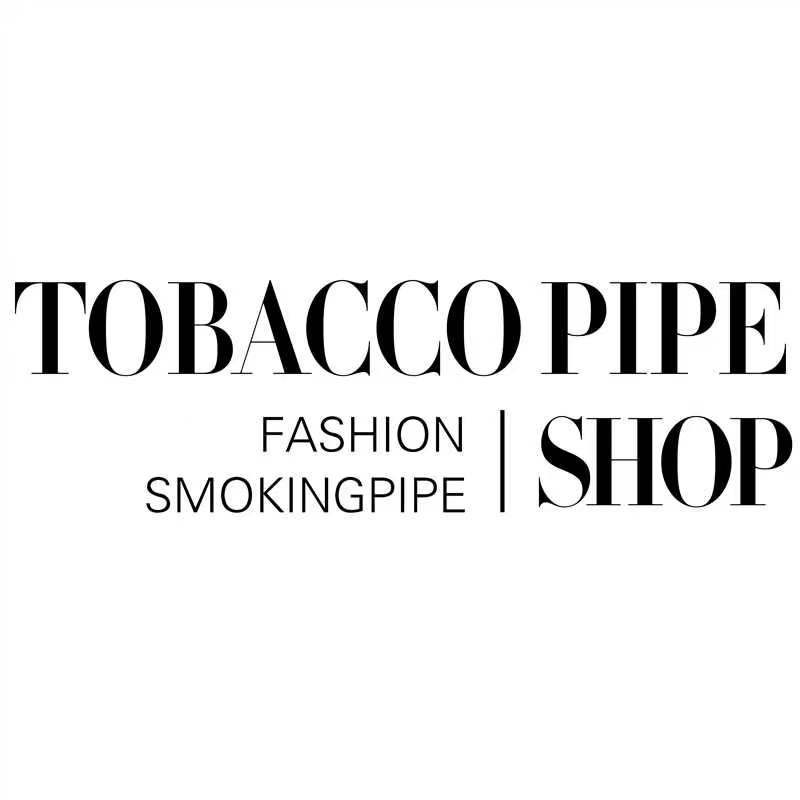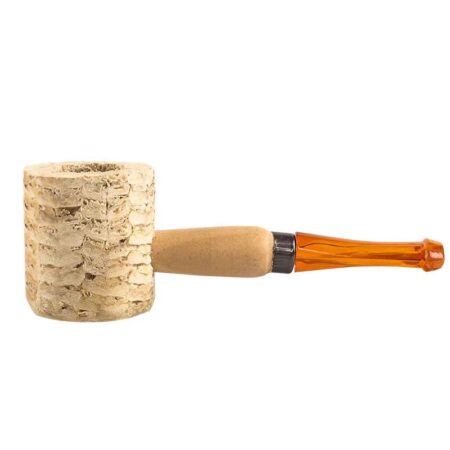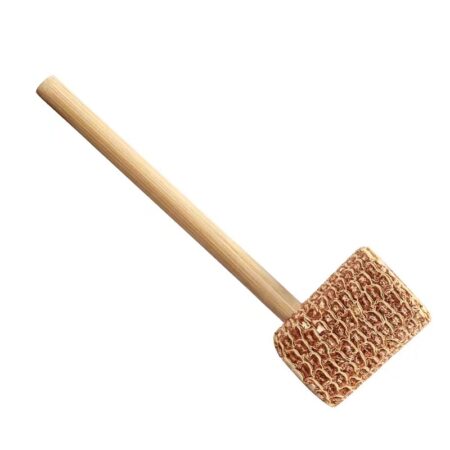I’m sure you’ve seen those uniquely shaped pipes in old movies. Yes, you guessed it right! I’m talking about corncob tubes! Its simple, pastoral design always reminds me of a country style. As a tool for smoking tobacco with a long history, the corncob pipe carries a very long history and culture.
So today I will take you all to explore the origin, what is a corn cob pipe, and What are the advantages of smoking from a corn cob pipe. We will uncover their unique appeal together.
This will be a fascinating cultural and historical journey! If you also like corn cob pipes, come join me on this adventure!
what is a corn cob pipe?
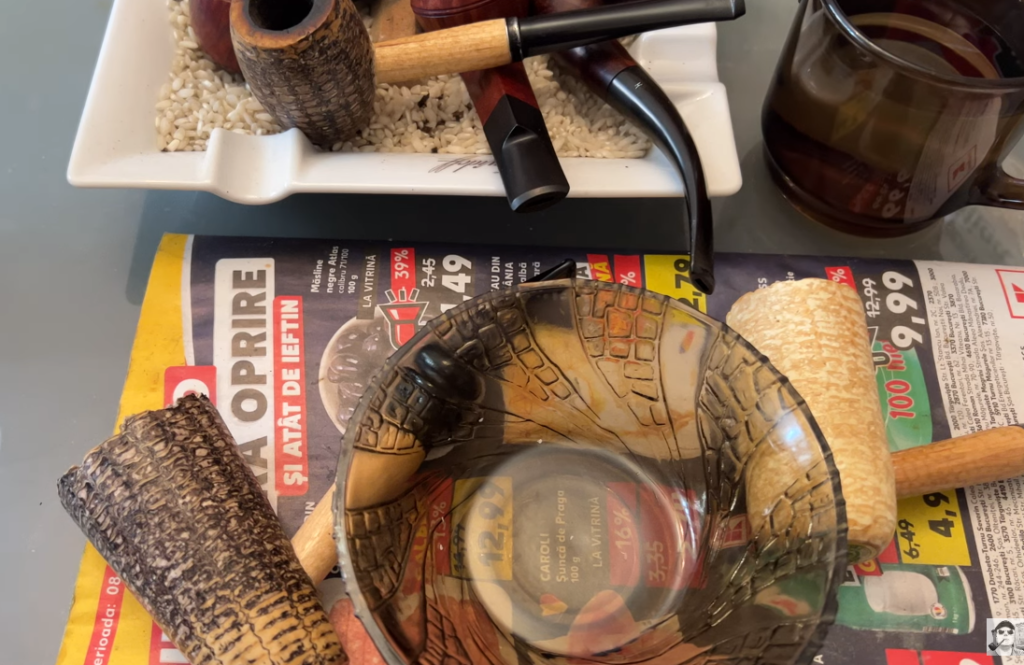
The pipe part of the corn cob pipe is made from natural corn cob, which acts as a lightweight, porous filter that can absorb moisture as the smoke passes through it. To make a corn cob pipe, the dried corn cob is first cleaned out, leaving the central woody pit hollow. The bowl is then formed by drilling into one end of the cob, and a wooden stem is inserted into the opposite end to form the mouthpiece. This unique design originated in the early 19th century United States when settlers Made inexpensive and disposable corn cob pipes from abundant corn crops. It evolved from the initial simple hollowed corn rod to the gradually developed more sophisticated crafting processes.
The porous nature of the corn cob makes it an ideal material for pipe stems. It naturally absorbs moisture, keeping the smoke cool, dry, and smooth. The original flavor of tobacco can also be best delivered through a corn cob pipe. They require much less break-in time compared to briar pipes and provide a neutral platform that doesn’t impart other flavors.
The pipe bowl of the corn cob pipes we see today is often made of briar wood or molded hardwood compound, as the corn cob itself is not suitable for direct combustion. So an independent bowl is fixed on the corn cob stem. There is also a hardwood tube embedded inside the cob liner to prevent erosion of the smoke channel. The joint connecting the bowl and the cob is sealed with a plaster and asbestos mixture.
corn cob pipe history
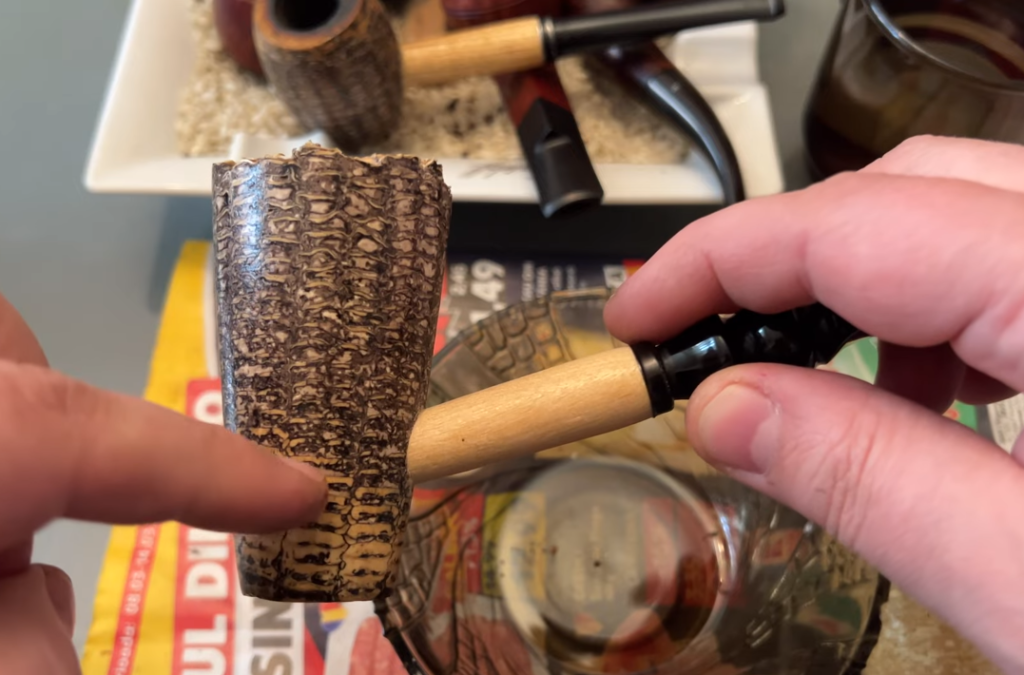
Legend has it that in 1869, a farmer in the Missouri countryside whittled a pipe out of a dried corn cob. He enjoyed the nice smooth smoking experience so much that he asked his carpenter friend to turn stems for the pipes on his lathe. There are companies commercializing it
The most famous of these is the Missouri Meerschaum Company. It was the Missouri Meerschaum Company that began mass-producing corn cob pipes in 1869, transforming it from a makeshift farmer’s tool to a true commercialized product. Although large-scale production started in the late 1800s, individual crafting and use of corn cob pipes had already existed long before that. In the expansive rural areas of America, they were common among farmers, hobos, migrant workers, and vagabonds of all sorts.
What are the advantages of smoking from a corn cob pipe?

When we finish learning about corncob pipes, have you ever wondered why some pipe smokers have a special liking for corncob pipes?
Let me tell you, not only is it cheaper but it gives a cooler smoke than traditional briar or meerschaum. The porous structure of the corn cob acts like a sponge, keeping the smoke nice and cool, dry and smooth. It gives you this mellow, rich smoking experience and cuts down on that nasty tongue bite you can get from hotter, drier smoke. The increased airflow helps regulate the burn and temperature, delivering pleasing billows of smoke every time.
On top of that, the corn cob imparts practically no flavor to the smoke itself. Some wood pipes can absorb residual tastes over time, altering the flavor of different tobaccos smoked in that pipe. But with the corn cob, you get a clean, pure Tobacco taste every single smoke. You really notice it when you alternate between Virginia and Burley blends.
Corn cob pipes have a bunch of advantages over other materials too. First off, the corn cob itself is a natural, renewable, and biodegradable material. Even high-end handcrafted corn cobs cost peanuts to produce, with prices under $50.
Second, corn cobs are really lightweight and comfortable to hold in the mouth for long periods. You must know that smoking a pipe should be a relaxing experience. I don’t think anyone wants to have a tiring process.
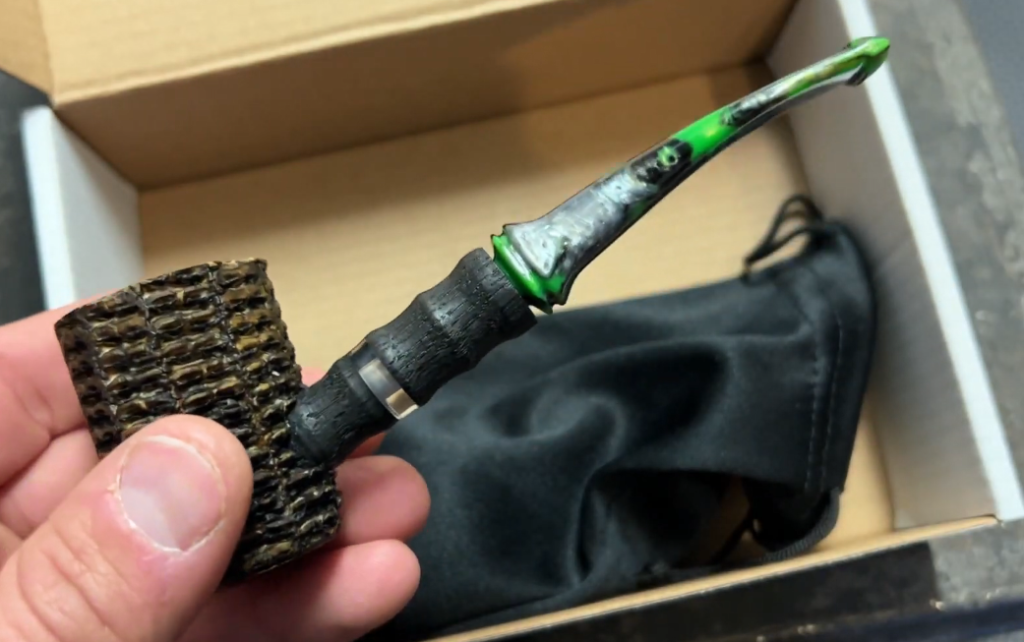
Who typically used corn cob pipes historically?
Well, when we think of historical big shots smoking pipes, we’re like, yeah they must be puffin’ away on some fancy schmancy wooden pipes, filled with hella expensive imported tobacco, ya know? But get this – during the 1800s and early In the 1900s, corn cob pipes were actually mad popular among both regular working peeps and even some elite class, man!- even presidents, prime ministers, and military honchos jumped on the corncob bandwagon! Wild right?
For example, American presidents like James Monroe and war heroes such as George Washington were total corn cob fanboys. Washington loved his corncobs so much that he made sure to show them off in his official portraits. Across the pond, British Prime Minister Winston Churchill was often photographed looking fly with his fave corn cob pipe.
General Douglas MacArthur, who led American forces in the Pacific during World War II, frequently appeared in public with a corn cob pipe in his mouth too. The pipe became one of MacArthur’s signature items. There are stories that when he escaped the Philippines in 1942, he made sure to bring his favorite corn cob pipe with him. Nearly every public photo of him has a corncob pipe. The image of MacArthur and the corncob pipe have become integrated, becoming a major symbol in U.S. and world military history.

